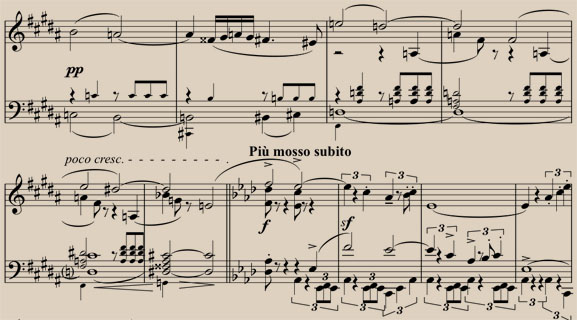 Play
Play
At one grotesque point in the Scherzo of the Seventh Symphony, the cellos and basses dispense with pitches altogether.

-
In the Scherzo of the Fourth Symphony, as if to portray the Devil in the form of a village musician playing his rough fiddle, Mahler asks the concertmaster to tune his violin a tone higher than usual. A soloist in a playful chamber instrumentation, he plays a tune in C minor which perversely returns again and again to the alien note F#: the tritone, “the devil in music.” As a result of the special tuning, this note is played on an open string with a swell in the sound, suggesting a ghostly moan or cry.

-
Many of Mahler’s most gripping slow movements combine rondo with variation form. Every time the theme returns, it is elaborated, ornamented, extended, or combined with a countermelody or even a variation of itself. In this way, themes that are already very powerful when first stated, reach ever higher degrees of intensity. In the Tenth Symphony, this mode of expression reaches its greatest realization.

-
Mahler often lets us in on the creation of a lyrical idea by giving us the first two notes of a phrase, then three, and eventually the whole musical thought. In this piano introduction to a song on a poem by Fredrich Rückert, "I am Lost to the World" (Ich bin der Welt abhanden gekommen), this sequence evokes the quality of introspective thought.

 Play
Play
Play the extended video on the right to explore Mahler’s highly idiosyncratic use of the turn in the Ninth Symphony.


